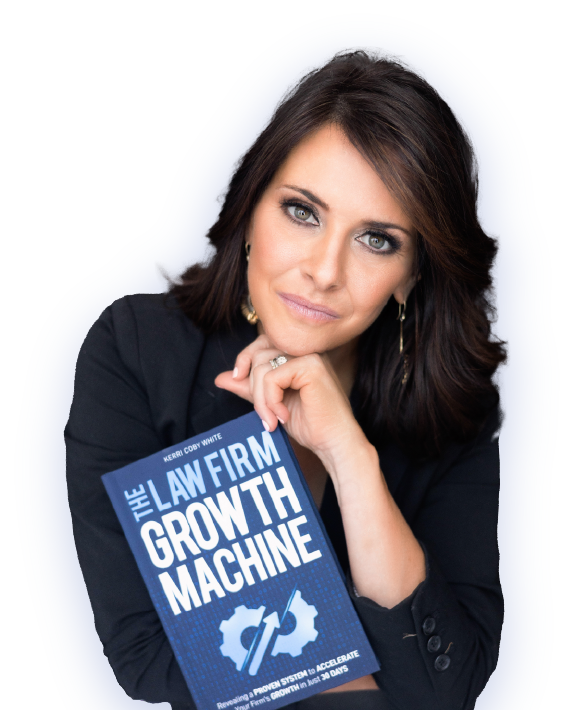I’ll never forget the first time I sat down with a law firm’s intake team and asked a straightforward question: “What do you really want to know from a potential client during that first call?” The silence that followed led me to a powerful realization: the essential questions every legal intake professional should ask go far beyond basic demographics. They’re not just about collecting data; they’re about building trust, understanding client needs, and setting the tone for a high-quality experience. This kind of thoughtful engagement is what truly separates thriving firms from struggling ones in a competitive marketplace.
That moment uncovered a common challenge in the legal world: most intake professionals are trained to collect data, not insight. But the truth is, intake isn’t just about filling in blanks. It’s about building trust, uncovering client needs, and setting the tone for a high-quality experience. They’re designed to elicit understanding, qualify leads, and deepen connection. In a competitive marketplace, that kind of thoughtful engagement is what separates thriving firms from struggling ones.
In this blog post, we’ll dive into the essential questions every legal intake team should be asking. These aren’t just conversation starters, they’re conversion drivers. We’ll walk through practical, proven questions that can be integrated into your intake process immediately. Whether you’re managing a small intake department or scaling a high-volume team, refining your approach to questioning can have a direct impact on your retention rates, client satisfaction, and bottom line. Let’s get into it.
1. The Power of the Right Questions
Let’s start here: Why do questions matter so much?
Because your job as an intake professional isn’t just to “screen” or “log” leads. It’s to connect. The right question uncovers fears, expectations, urgency, and helps your firm decide whether this is a case worth pursuing.
A few years back, I trained an intake team for a firm handling high-volume auto accident cases. They were frustrated by no-shows and unresponsive leads. We made one change: adding the question, “How is this incident affecting your daily life?” Boom. The tone of conversations shifted. Clients opened up. The intake team connected emotionally. Retention jumped by 11% in 30 days.
That’s the power of one good question.
The firms that ask better questions close more clients. It’s that simple.
2. Essential Questions to Ask During Intake
- Client Background
You want to know who this person is. Not just legally, but emotionally. Too often, intake conversations focus strictly on gathering legal facts or filling out forms. But if you truly want to build trust and create meaningful engagement, you need to see the full picture of the person on the other end of the line.
One of the best ways to open that door is by asking, “Can you tell me about your current situation?” It is a simple question, but one that invites the client to share what is really going on in their life. A client calling about a car crash might not immediately say, “I am in pain and I cannot work.” But when given this opportunity, they will often open up. Now, you are not just documenting damages for the file. You are demonstrating empathy, validating their experience, and starting to build rapport.
Another critical question I always recommend is, “Have you previously worked with an attorney on this matter?” This does more than check a box. It gives you valuable insight into their past experiences and expectations. One of my favorite follow-up questions here is, “How did that go?” Clients will often reveal frustrations, unmet needs, or qualities they are hoping to find this time around. I once had a client respond, “The last attorney never called me back after the first meeting.” That one comment helped us understand exactly how to structure our communication and follow-up strategy to provide a better experience.
When your legal intake questions go beyond basic demographics and into the emotional landscape of the client, you are no longer just collecting data. You are creating a connection. And in a competitive legal marketplace, connection is what drives conversion and long-term client satisfaction.
- Case Specifics
When exploring case specifics, don’t settle for a sterile timeline. Seek out the emotion behind the moment. The why now often reveals far more than the legal facts. One powerful question I always recommend is, “What prompted you to seek legal assistance now?” I’ll never forget a client who told us, “I’ve been putting this off for months, but today my landlord threatened to evict me.” That single moment of urgency shaped everything about how we followed up. It influenced how quickly we responded, who we assigned the case to, and how we structured the initial consultation.
Another critical layer is understanding the sequence of events. I encourage intake teams to ask, “Can you provide a timeline of events?” But don’t stop there. Avoid falling into the trap of simply recording facts like a stenographer. This is an opportunity to build rapport and demonstrate genuine interest. Use clarifying follow-ups such as, “And what happened next?” or, “How did that affect you?” These conversational touches turn your script into an authentic connection and uncover details that can be vital during screening.
- Client Expectations
One of the most impactful areas where legal intake questions can transform your process is around client expectations. Asking, “What outcome are you hoping to achieve?” will often yield surprising insights. I’ve heard clients say everything from, “I want justice,” to, “I just want them to say sorry.” Understanding this early allows your team to align the client’s goals with legal realities and to begin shaping expectations appropriately from the start of the client journey.
It is equally important to uncover what might be holding the client back. I always suggest including the question, “Are there any concerns or questions you have?” This seemingly simple inquiry often reveals deep fears. Fear about money, fear about outcomes, fear about reputation. And as I remind every intake team I coach, you cannot address what you do not know. Proactively surfacing these concerns creates trust and allows you to provide meaningful reassurance.
- Financial Considerations
Discussing finances is one of the most delicate aspects of the intake conversation. Handled well, it can also be one of the most trust-building. I recommend asking, “Do you have any budgetary constraints?” On the surface, this can sound transactional or cold, but when approached with genuine care using phrasing such as, “We want to make sure our process aligns with your needs,” it invites honesty and openness.
It is also essential to ensure clarity around your firm’s billing practices. While many clients will answer “yes” if asked whether they understand the fees, I have found that this is not always the case. That is why I encourage teams to follow up with, “Would it be helpful if I explained it in plain language?” Taking this extra step can prevent misunderstandings later and reinforce transparency. Transparency is an increasingly important factor in client satisfaction.
- Communication Preferences
The way your team communicates can be just as important as what they communicate. One of the most effective legal intake questions I teach firms to ask is, “What is your preferred method of communication?” I once worked with a firm that improved its lead conversion significantly simply by shifting from phone calls to text messages for appointment reminders. Understanding whether your clients prefer a call, text, or email allows you to meet them where they are and dramatically increases engagement.
Finally, ask clients, “When is the best time to reach you?” This small question offers a big payoff. It not only demonstrates respect for the client’s time and schedule but also increases the success rate of your follow-up sequence. When clients feel in control of the communication cadence, they are more likely to stay engaged, responsive, and ultimately more satisfied with their experience.
3. Integrating Questions into Your Intake Process
So you’ve built a better intake questionnaire, great. But having the right questions on paper is only the beginning. The real magic happens when those questions are brought to life in the conversations your intake team has every day. That’s where operational excellence comes in. If you’re looking for a comprehensive roadmap, we’ve outlined how to build a smooth legal intake process from start to finish.
Let’s start with training. I’ve said it before, and I’ll say it again: training isn’t a one-and-done event. It’s not a workshop you run once a year and then forget. It’s a mindset, an ongoing commitment to coaching, development, and continuous improvement. Your team doesn’t just need to memorize the intake script; they need to understand the why behind every question they ask.
One of the most effective tools I’ve seen firms use is recorded intake calls. Real-life examples, both the wins and the missed opportunities, are gold for coaching. Play a call that nailed the tone, timing, and follow-up, then discuss what worked. Play another where the intake rep rushed or skipped key questions, and use that as a learning opportunity. The goal isn’t to embarrass anyone, it’s to build a culture where everyone is focused on getting better.
Role-playing can be equally powerful. Let your team experience what it feels like to be on the other end of a poorly structured call versus one that builds trust from the first hello. When reps feel the difference, they start to internalize what empathy and effectiveness really sound like.
Technology also plays a critical role in operationalizing your questions. Your CRM or lead management platform should be more than a glorified contact list; it should reflect the nuances of your intake process. Set up custom fields for deeper client insights. Ensure your system tracks who is asking which questions and correlates this with conversion data. Are your top-performing reps consistently digging deeper with clients? Are certain questions being skipped entirely? That’s the kind of data that tells a story and helps you refine your process.
Don’t forget to build in guardrails, too. I’ve worked with firms that created smart alerts to flag missing data points, ensuring no key questions fall through the cracks. You’d be surprised how often a lead gets passed along without basic information simply because a form wasn’t fully completed. Automation here isn’t about replacing your team, it’s about supporting them.
And then there’s refinement, because no intake process should stay static. I recommend holding regular review meetings, ideally monthly, to analyze patterns in client responses. Are your current questions still landing? Are they generating useful information or just adding noise? What trends are emerging that require new or revised questions?
Go one step further and ask your clients. A simple post-intake survey, something like, “Was there anything we didn’t ask that you wish we had?” can yield incredibly useful feedback. It’s a small effort that shows clients you value their perspective, and it gives you insights that internal reviews might miss.
Remember, integration isn’t about installing a new form or handing out a checklist. It’s about weaving the essential questions every legal intake professional should ask into the daily rhythm of your team’s work, training them to lead meaningful conversations, empowering them with the right tools, and continuously refining your approach based on real-world results.
Done right, this isn’t just intake. It’s insight in motion.
4. Common Pitfalls to Avoid
Even the best scripts can go sideways if you don’t watch for these traps.
Asking Too Many Questions at Once
One firm had a 36-question intake form. Guess how many leads completed it? 12%. Keep it tight. Focus on the questions that drive trust and qualification.
Failing to Listen
It’s easy to get into “form-filler” mode. Resist. Ask follow-ups. Mirror back. Show the caller they’re being heard, not processed.
Being Too Rigid
Empathy doesn’t follow a script. If a client breaks down mid-call, pause. Ask if they’d like a moment. Offer to reschedule. Be human first, rep second.
How to Audit and Improve Your Existing Intake Questionnaire
If you are wondering whether your legal intake questions are truly working, there is a straightforward way to find out. It starts with listening to what is happening in real conversations.
Begin by randomly selecting a sample of intake calls, about ten to start. As you listen, pay close attention to the flow of the conversation. Which questions spark engagement? Which ones naturally lead to deeper dialogue? On the other hand, which questions seem to stall the conversation or confuse the client? You may also notice that certain questions are being skipped altogether. If that happens, ask yourself why. Is it a lack of clarity? Poor placement in the script? Or perhaps the question itself no longer serves your current process. Listening to real calls will give you invaluable insights into how your intake process plays out in practice.
Next, talk to your team. Your intake reps are on the front lines every single day, and they know better than anyone which questions work and which do not. Sit down with them and ask, Which questions do they find most useful during their conversations? Which ones feel awkward or unnecessary? What do they wish they could ask instead? You will learn a lot by simply listening to their perspective. Often, intake reps can suggest small tweaks that lead to big improvements in client engagement and conversion.
From there, it helps to take a step back and benchmark your process against the best in the business. Look at what the top-performing firms in your practice area are doing. The top five percent of firms are constantly refining their intake processes to drive better results. Review intake guides, attend industry webinars, and explore firm websites to spot patterns and identify new approaches. I have worked with many of these firms, and I can tell you firsthand that the difference often comes down to the quality of their legal intake questions.
Once you have gathered these insights, it is time to simplify and prioritize your script. Begin by placing rapport-building questions at the start of the conversation. This helps set the right tone and build trust early on. Eliminate any duplicate questions that add unnecessary friction to the call. Finally, add logic branching so that clients only hear questions relevant to their situation. For example, personal injury clients should not be asked about family law matters. Tailoring the flow of your questionnaire creates a more seamless client experience.
After revising your intake questionnaire, roll out the new version to a small group first. Testing on a smaller scale allows you to track results and make adjustments before a full launch. Monitor key metrics such as lead conversion rate, call duration, and client satisfaction. You can include a simple question in your follow-up email asking clients if the intake process met their needs. Use the data you collect to iterate and refine your questionnaire. Let the numbers guide you, not guesswork.
Conclusion
Let’s bring it home. The legal intake questions you ask do far more than fill out a form. They shape the client’s first impression of your firm. They help you qualify leads effectively. And they lay the groundwork for a successful case, or a missed opportunity.
So take this moment to go back to your team. Revisit your intake process with fresh eyes. Ask yourself: Are we asking the right questions? Are we asking them in the right way? And most importantly, are we truly listening to the answers?
Because intake is not just a process. It is the beginning of a relationship. And as we all know, relationships start with the right questions.
Learn more at kerrijames.co










